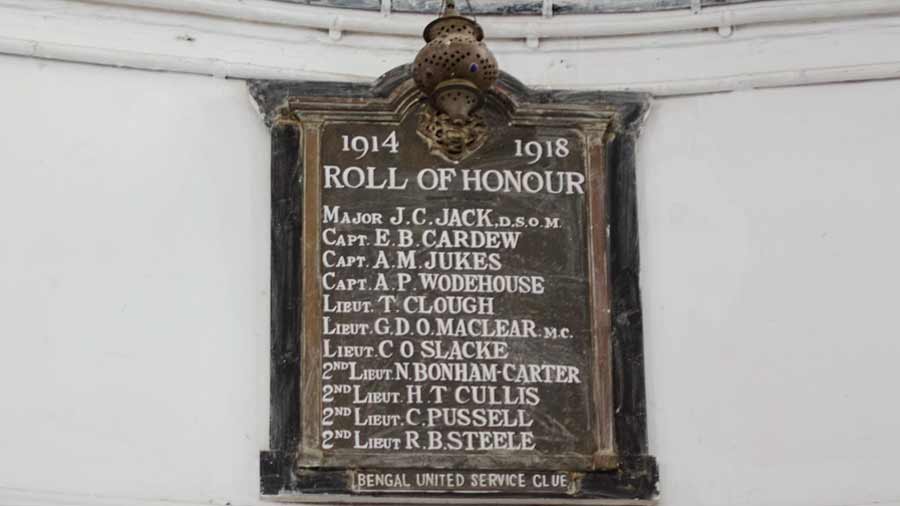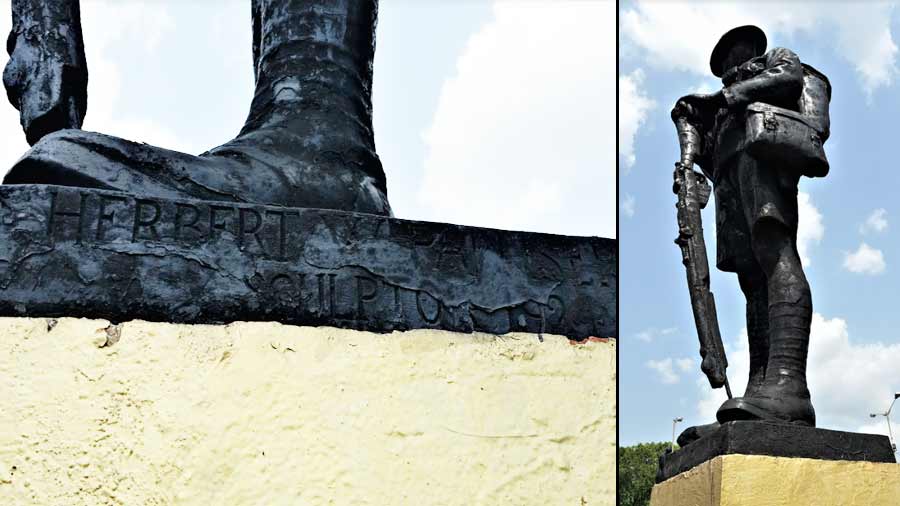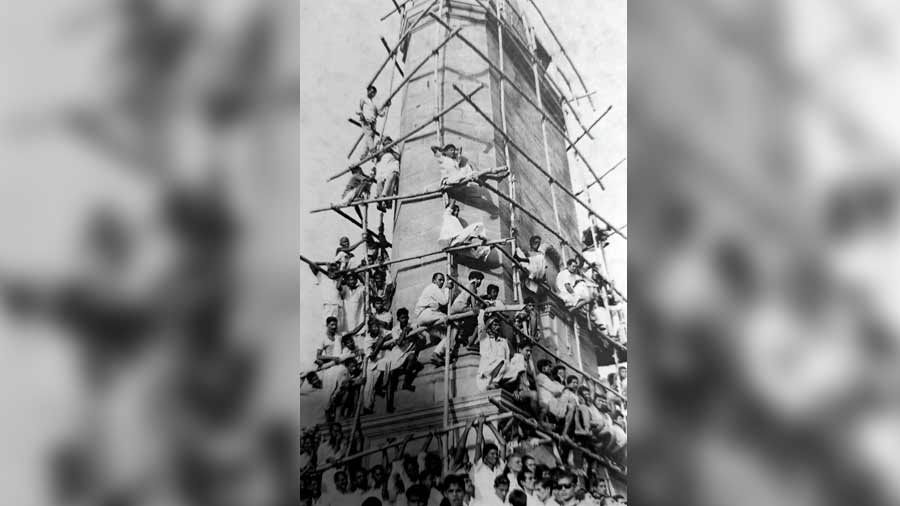Among all the First World War memorials in India, the most famous is perhaps India Gate. The elegant monument, though made by the British, was dedicated to Indian soldiers — of the British Indian Army — who laid down their lives to protect the British king.
For the memorial to British and Anglo-Indian soldiers lost in the war, the British chose Calcutta over Delhi, though it was no longer the capital of India at the time. Moreover, a distinctly European design, without any Indo-Persian influences, was chosen for the monument. The Calcutta war monument for British soldiers fallen in World War I, known as the Glorious Dead Cenotaph, was placed at Maidan near Red Road. It remains to this day, one of the most visible signs of Calcutta’s tryst with the Great War.
India’s participation in the war was significant and so were the casualties. Following the war, by the beginning of the 1920s, the British were being confronted by Indians as they sought freedom. The need for a display of British might was high, and the construction of monuments and memorials was a part of it.
A British war memorial

The plaques listing the names of fallen soldiers were moved to St John’s Church in 1959 Subhadip Mukherjee
The war memorial was created by famous British sculptor Herbert William Palliser, who gave a staid, elegant design. The words ‘GLORIOUS DEAD’ are etched on it along with the years of war — 1914-1918 — in Roman numerals. Built in solid yellow sandstone, the cenotaph is often compared to, and called a replica of London’s Whitehall War memorial. However, it has its own distinctive features, though it shares some similarities with the London monument designed by David Lutyen.

Subhadip Mukherjee
Copper plaques with the names of the fallen soldiers were placed on the sides of the monument, but removed in 1959 and moved to St John’s Church to save it from vandalism. There are a total of six plaques that mention the lives that were sacrificed for ‘King and country.’ Under the roll of honour, are several British and Anglo Indian names, some with the ranks of the soldiers. Last names such as Pussell, Wodehouse, Cardew, Burton, Carter, are mentioned in the ranks of majors, captains, lieutenants, second lieutenants and other soldiers.

Statues of British soldiers in uniform and a funeral vigil stand on two sides of the memorial Somen Sengupta
The cenotaph is flanked by two statues of soldiers dressed in British military uniform. These two statues were made in England and shipped to India. They are in the posture of a standard British Army funeral vigil with their heads bowed and their rifles held in front and the sharp end of the bayonet pointed to the ground, as a mark of respect to the departed. Unusual for a memorial of this nature, one can see the name of sculptor Herbert William Palliser etched into the base of these statues.
Preserving stories

An old photograph from the 1960s showing spectators climbing the monument to watch football matches Mona Chowdhury
Its location on the sprawling Maidan, and proximity to the football ground meant that there were times — until the mid-1960s — when ticketless spectators used to climb it to watch the match, causing enough harm to its structure. An old photograph taken by photographer Mona Chowdhury in the late 1960s shows the monument cordoned off with a loose fencing of iron chains and four small iron pillars. The pillars were destroyed and stolen from the grounds, and the high railings came up soon after. One of the soldier statues was damaged by a speeding vehicle and now they have both been painted black, which do not do much to preserve their vintage charm.
The Glorious Dead Cenotaph has huge historic significance, and in today’s time, can also be considered an important tourist location. With war tourism becoming a part of people’s travel itineraries, and travellers from Europe and the US travelling the world to trace familial relations and historical memories, monuments such as these can play a pivotal role as a magnet on Kolkata’s tourist map.
